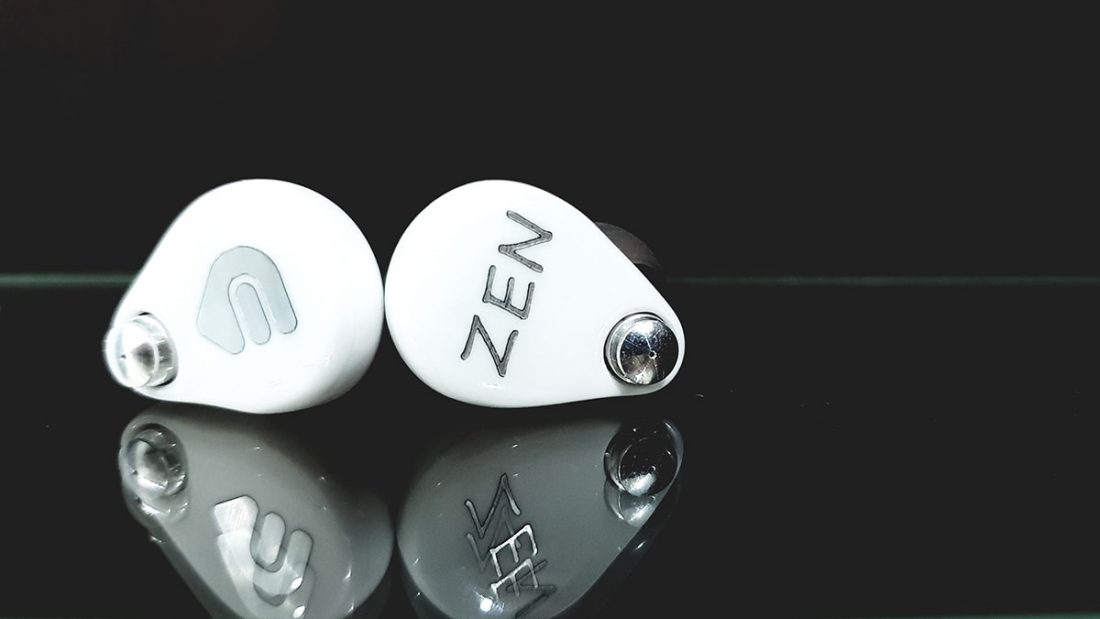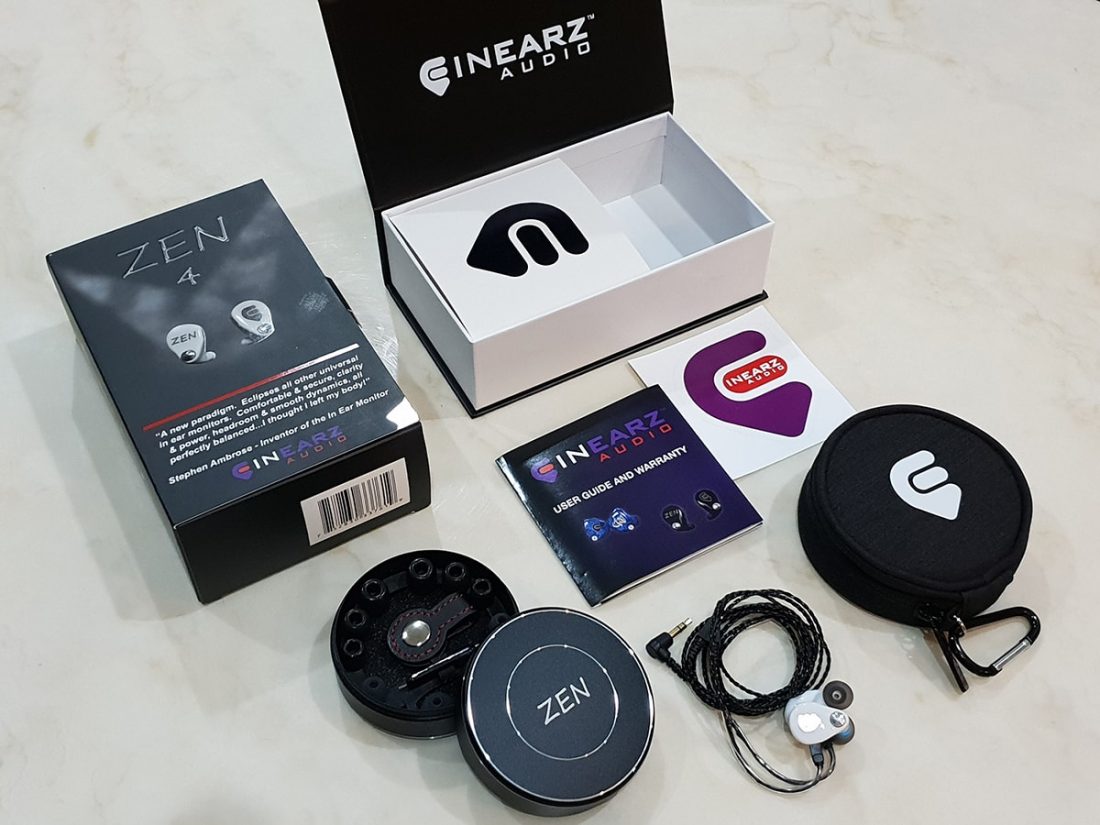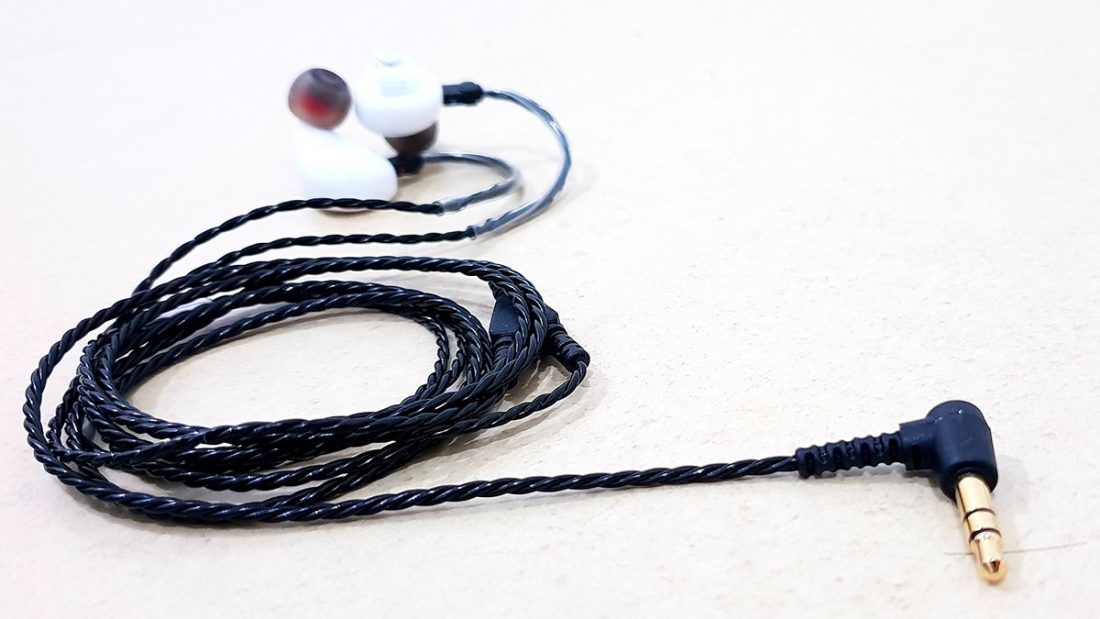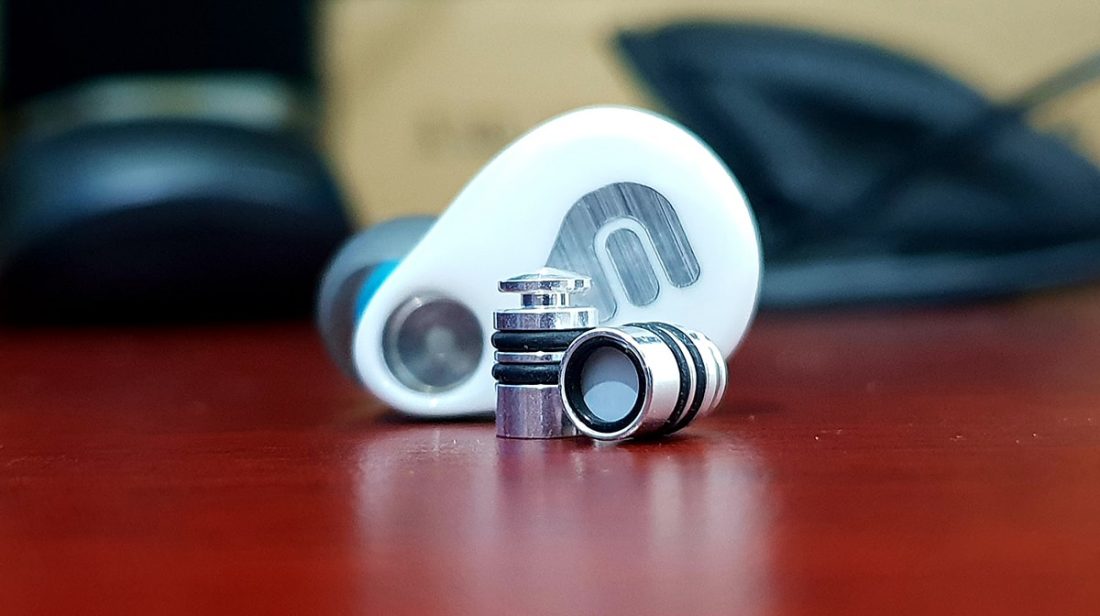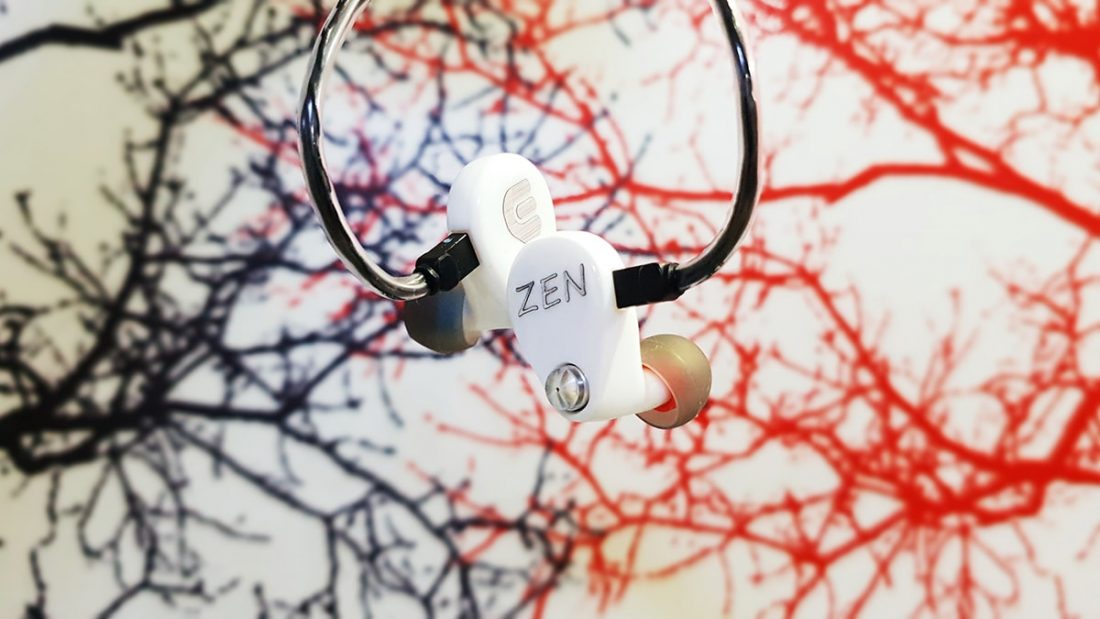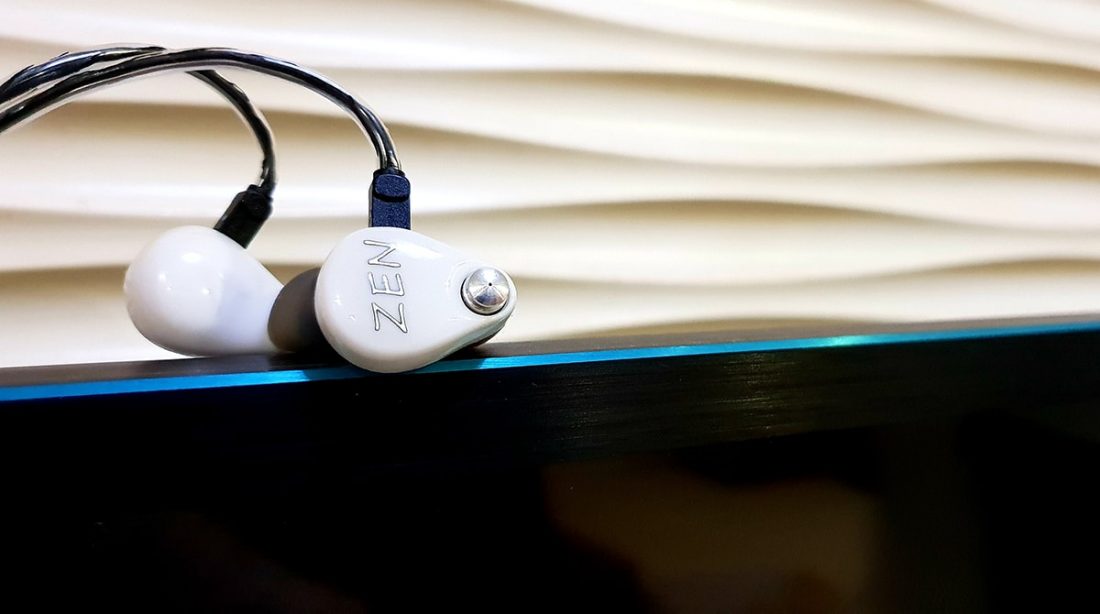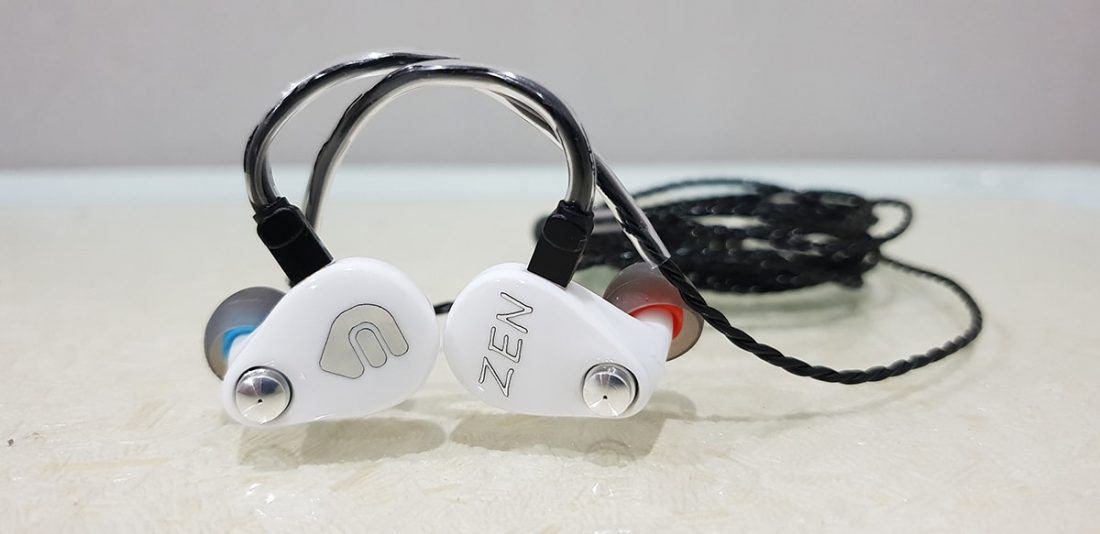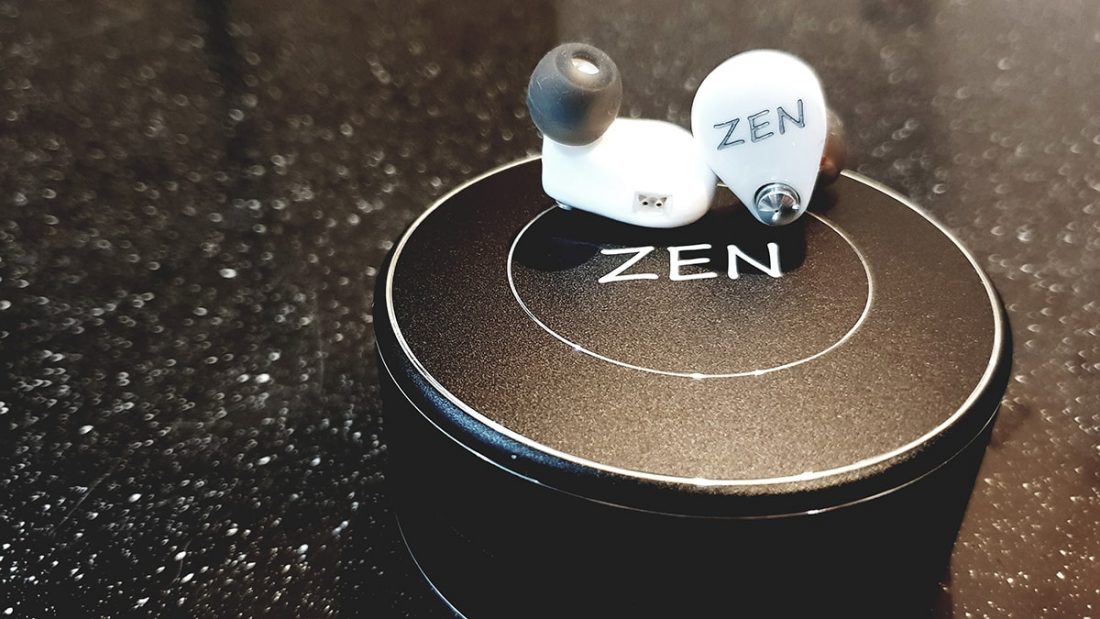There is a certain nobility in working behind the scenes, away from the limelight for the greater good. We think of the screenwriter, bringing movie magic to life on paper; or the songwriter who conceptualises songs way before they are recorded. We also think of Ben Affleck because he’s a better director than he is an actor lol. They supply the building blocks before your Lego set can become the Batmobile. At some point, you learn more tools of the trade, and feel compelled to step up. I write the songs, I sure as hell can perform ‘em. That’s the Lady Gaga and Bruno Mars template to fame. They tirelessly wrote songs for other singers before levelling up to become prima-donnas… uh I mean recording artists and mega-stars of their own. Have you seen A Star is Born? Holy hell that’s what mega-stars do!
Onward to Stardom
It is with this analogy we approach InEarz Audio. The custom in-ear monitor (CIEM) brand of hearing aid company Fisher Hearing Technologies, a few years ago they were known mainly for reshelling used CIEMs for new owners because the famous and glittery companies like JH Audio and 64 Audio wouldn’t do it. But as they continued honing their musical ears and tuning finesse, InEarz said yup, it’s go time, and launched their own roster of CIEMs. “Zen 4 will definitely tick the boxes for those seeking a relaxed, lush and serene sound to set you adrift to La-La Land”
In the next step to superstardom, InEarz partnered with Asius Technologies to incorporate the well-known ADEL modules into their IEMs, including the new Zen lineup of universals. ADEL modules theoretically protect hearing, and there are quite a few testimonies attesting to that. I’ll dive into ADEL tech later, but suffice to say, InEarz sound quality coupled with hearing protection is win-win on paper.
In-Ear Peace
Today we’ll be looking at the top universal IEM in the Zen series, the Zen 4. It has 4 balanced armatures (BAs) in a 2 low, 1 mid and 1 high configuration; sporting a 4-way crossover and a single bore design; housed within a neat, 3D-printed hypoallergenic acrylic shell. Boy that’s a mouthful, but there is a lot of technology within these tiny earpieces. The Zen 4 is available in piano black or pristine white. Those are not official names, I made them up because they sounded cool. Zen 4 currently retails at USD599 and is sold through their official website. I would like to extend my heartfelt thanks to Kaysen, the general manager of InEarz Audio for providing me with the loaner unit for review.
Equipment Used:
DAP
Sony NW-WM1A “K” Modded, FW 3.0
IEMs
InEarz Audio Zen 4 FiiO FH5 IMR Acoustics R1
Albums Listened
Amber Rubarth – Sessions from the 17th Ward Daft Punk – Random Access Memories Denean – The Weaving Ed Sheeran – X Fleetwood Mac – Tango in the Night Lorde – Pure Heroine Macy Gray – Stripped Queen – Greatest Hits Taylor Swift – 1989 The Dark Knight – Hans Zimmer
Packaging and Accessories
The Zen 4 packaging reminds me of a party grab bag at a neighbourhood birthday, or a jar of homemade cookies. It’s not to say the packaging is bad, far from it, but the funky colours and vibrant design does carry a handcrafted, made-with-love vibe. Far from the sleek, monotone, uber-serious packaging from big brands which can get boring. InEarz keeps things fun. Inside the grab bag (alright it’s actually a pretty neat packaging) you’ll find the Zen 4 with ADEL S1 modules, 2-pin stock cable, an uber-cool eartip organiser that looks like a bullet chamber, six pairs of eartips (3 pairs of silicon and 3 pairs of foam in S/M/L), a leather cable organiser, ear cleaning tool, and two cases (aluminium and canvas, pick your poison). It’s quite a complete accessory set.
Design and Build Quality
True to InEarz’s CIEM roots, their first universals are made entirely of acrylic shells, in a simplistic slab and nozzle design. It looks like a minimalist version of a CIEM, if you will. Simple is sometimes best, as you will soon discover that the flat outside surface of the Zen 4 leads to great comfort. As for build quality, being acrylic earpieces, the standard rules for CIEMs apply here as well. Don’t drop them from a height, avoid getting moisture on them, and for goodness’ sake don’t step on them. That would be a very expensive lesson. Otherwise, the Zen 4 is well-built, with smooth and ergonomic curves all over. They’re nice to hold and touch!
A Nozzle Conundrum
My complaints concern the nozzle. While there is a lip at the end to hold the eartips in place, there are no ridges along the shaft to denote how deep to insert the eartips. You just glide them along the shaft and hope for the best. I hope that didn’t sound too naughty. I tend to favour stock medium-sized silicone tips pushed all the way in for the best seal, bass response, and least wiggle room for the shells.
Cable
A standard Plastics One cable is provided with the Zen 4. This is the cable provided by most CIEM companies. When we say “stock cable”, ding ding, this is it. It is fuss-free, functional, and sturdily built, a worthwhile companion until you make the mistake of stepping into the world of upgrade cables (like me). A mistake that drains the wallet empty for a slight sound tweak. In and of itself, the Plastics One does a good enough job. Its four strands of silver-plated tinsel wires confer great flexibility and ergonomics, and is a joy to handle (and photograph). Build quality is rugged, made to withstand daily on-the-go use. I have reservations about its sound quality if compared to upgrade cables (covered here), but for what it is, Plastics One does most things right and sets an admirable standard.
ADEL Modules
No relation to the British Grammy award-winner, ADEL stands for Ambrose Diaphonic Ear Lens. Developed by Mr Stephen Ambrose, founder of Asius Technologies, ADEL modules contain a membrane (or second eardrum) that absorbs harmful pneumatic pressure from your eardrums, so they won’t be pummeled to submission everytime you turn the volume up. The membrane allows the ear canal to “breathe” and prevent buildup of sound pressure to our eardrums, this leads to lower listening volumes and, theoretically, hearing protection. I’ve read testimonials that ADEL does help relieve tinnitus, but as to actual prevention of deafness, the evidence remains premature, as there is no long term study done yet.
Set Fire to the Rain
The ADEL module is a small metal barrel, housing the membrane inside. The module fits snugly in the socket on the outer surface of the Zen 4. You might need to grow your nails out for easier removal, and future catfights. A number of modules are available, for the default S1 the sound signature is gooey and bassy and warm. Other modules (B1, G1, O1, MAM) are purchased separately and confer different sound characteristics.
Fit, Comfort and Isolation
The pseudo-CIEM build makes for a winning fit. The blobby design might be divisive, but you can’t go wrong with the fit. The Zen 4 sits flush in the ears, and you can even listen while lying on the side. Just make sure your bathrobe doesn’t flop open when you lie on the side lol. As for isolation, it is below average. While the rest of the earpiece is solid acrylic, the thin membrane from the S1 module prevents a full seal and allows outside noise to permeate. From the Asius website, the S1 module provides -18dB of noise isolation. I’ve taken the Zen 4 out for a spin outdoors. While not as horrible as say, earbuds, it performs like vented IEMs so you will hear engine noises and loud whirrs. Just a heads up.
Sound Quality
Imagine yourself in the most relaxed state possible. On the beach, gentle waves crashing against the shore, seagulls performing a sky dance, tiny breeze cooling and calming you down. You’re seated in the sand, toes dipped in water, drink in one hand, book in the other. Finally content and relaxed, you breathe out a grateful sigh, and pee a little…
Attaining Zen
Hang on, that was a bit too relaxed. And that’s how, in a nutshell, I would describe the Zen 4 sound. It’s warm and inviting, with a uniform smoothness that glides over the music, perhaps a touch too smooth. Details are sometimes glossed over, as are recording imperfections, in the pursuit of a soothing, cooing sound that invites you to lounge with them. As a formality, the Zen 4 was burnt in for 100 hours with my song collection and pop radio. I did not detect any change in sound quality before and after burn-in, either that or I did not strain my ears enough for a more critical listen. The main setup used was my reference DAP, Sony WM1A “K” Modded (low gain and Direct Source on) > stock cable > Zen 4.
Overall Sound Signature
The Zen 4 is a warm IEM with elevated bass and a midbass emphasis; lush, liquid mids that sound like maple syrup; and a soothing, unchallenging treble to keep things safe and sane. The soundstage width is not bad, but height, depth and separation are excellent for the price category. A smooth, lush signature will always have fans, but those seeking a brighter, more exciting signature would have to look elsewhere.
Bass
Weird analogy, but here goes. The most accomplished and breakout member of the spectrum, it still sticks around to help its brethren, although it should be destined for greater things, like a golfing career. While Zen 4 possesses possibly the smoothest signature on the planet, it doesn’t hinder the bass much. The bass is marvelously enhanced, with midbass given more emphasis. It nosedives to great depths, giving impressively throat-tickling subbass. The subbass licks are lean, swift and well-defined, revealing oodles of texture.
The Musical Bass
From the midbass up, the main characteristic of the signature takes hold. Notes are warm, fuzzy, without much air separating each note. Timbre is fairly accurate with a sweet tinge, sounding coloured and natural with a generously lingering decay. Punch and slam are on the gentler side, preferring flat hits over power and dynamism. It’s a genteel, musical bass, sounding safe and inoffensive, like someone trying to fit in the cool group. Maybe a boyband. But at the same time, it’s organic and natural-sounding, and nobody ever complained about thick bass. The tonality and extension mimics a dynamic driver, but everything else, from thump to air to dynamics, is typical BA bass. This will have to do for now.
Mids
What do Michael Jackson, Sade and Santana have in common? One is a criminal, one is an operator, and the last one is just plain smooth. Crucial to the Zen 4 mids is the warm, inviting tonality and an utterly stress-free, smooth (there’s that word again) tuning. Like the bass, timbre is natural and analogue-sounding, pulling the listener in with its laid-back but realistic portrayal of vocals and instruments.
Second Coming
Notes are frontally located and oh, so lush. They flow like one gentle wave crashing into another. Thing is, the mids are so polished and smooth they’re like the second coming of butter. It’s unquestionably smooth, but lack bite, texture, and a snappy PRaT (pacing, rhythm and timing). Notes smear into one another sometimes, without completing the full attack-decay cycle before the next note hits. As a result, the Zen 4 mids sound slightly veiled and distant. Musical passages, instead of being well-differentiated individual notes, play like a long caterpillar instead of a row of ants if you catch my drift. Listening to it, I craved a black background and better note definition, but can easily see why those who want a lounging IEM would like this.
Treble
Treble preferences vary greatly between individuals, kinda like how much hot sauce you want on your food. Here we have a wildly popular chicken joint called Nando’s, and you tell them how spicy you want ‘em, from “Extra Hot” all the way to well, “Lemon and Herb”. I’ll preface by saying there’s a preference mismatch from the start. I’ve been told I’m extra hot (thanks!), but Zen 4 is definitely lemony and herby. The treble, ascending from the full-bodied character of the mids, has a warm tilt and smoothness to rival a frothy stout. It rolls off early and quickly, never even approaching the sibilance zone. It’s a safely-tuned treble accessible to all ears, but that also means there’s no sparkle, nor sizzle, nor shimmer, just a soft touch that caresses your ears.
No Shizzle
From a technical standpoint, it frustrates. Extension is moderate, and the subdued mid/upper treble means the signature lacks a boost of air from these frequencies. Notes are round with barely-felt texture, while attack and decay are similarly nonchalant. It’s hard to appreciate individual notes when they segue into each other seamlessly. Those seeking transparency and detail would be left wanting. So from a practical standpoint, it is indispensable to the treble-sensitive, and to those seeking a calm, soothing and forgiving sound, like lavender for the ears. Like the mids, the treble’s insufficiencies in technical ability is made up for by its mellow and reassuring tone.
Soundstage and Imaging
In space, no one can hear you scream, because everyone is rocking earphones. The soundstage size is, simply put, big. While not the widest, the Zen 4’s remarkable depth and height will keep your mouth agape. It’s a deep, cavernous stage, like the Batcave.
Rolling in the Deep
The top-to-bottom lushness of the Zen 4 would have drowned in a congested, muddled mess if not for the stellar imaging. Each component of the music is cleanly separated, with every instrument and vocal having their own space. Directional cues are accurate as well. It’s not enough to eliminate the note-to-note haziness, which might be down to tuning choice, but it alleviates it somewhat. The ample stage size and imaging superiority is partly thanks to the ADEL module, as the vibrating membrane prevents a 100% seal, thus injecting some much-needed air and black spaces into the signature. It’s a fine example of soundstage properties complementing the signature. With notes as big as the Zen 4’s they’ll need a big playground to mingle in, and boy do they deliver.
Comparisons
FiiO FH5
I hold the FH5 in high regard. FiiO went from strength to strength in the IEM department, and with the FH5, signalled the start of a new, more ambitious era. If you believe in evolution, this is the fish that grew legs and walked out of the pond. At USD270, it is their most expensive IEM to date, but man can it take the fight to more expensive IEMs! At four drivers each, Zen 4 and FH5 seem destined to lock horns and destinies. FH5 is a 3BA + 1DD hybrid, giving an accessible and balanced musical sound. Zen 4 is a different beast altogether and pursues a warm, lush tuning to lull the unsuspecting, uh, evolutionist.
Don’t Mess With Double D’s
FH5’s dynamic driver does the job in bass, sounding natural from attack to decay while hitting ocean-floor lows. The subbass has amazing reach and rumble, and as good as Zen 4’s was it can’t compete. Higher up, FH5’s leaner midbass robs the signature of some body (somebody?), but manages to make the Zen 4 midbass sound sluggish and bloated. There are a few exceptions to the rule, but for bass, never send a BA to do a DD”s job. In the mids department, the FH5 is strong approaching the upper mids, where female vocals soar and detail levels remain high. Zen 4 pursues the opposite end, with the elevated midbass leading to a thick and euphonic lower mids that are perfect for male vocals. Zen 4’s adamant sense of organic tone and naturalness shines through, but when it comes to technical properties, it bows to FH5’s transparency, note texture and definition.
Different Strokes
It’s the same story in treble. Further up, FH5 glides to even more details and a nice sparkle, making Zen 4 sound gentle and slightly muted. For soundstage, ADEL tech shows its advantage by giving a larger and much deeper dimensions. Separation and imaging is also marginally better. FH5 is made to sound intimate, even loyal, never straying from the confines of your head. You could say Zen 4 stays on the Audeze LCD-2 side of things while FH5 is more of an LCD-X all-rounder. It’s different strokes for different folks. FH5 is more accomplished technically by far, while Zen 4 foregoes sheer transparency for a calm, tranquil signature to lose yourself into. It’s relaxed mood is not for everyone, but the naturalness will surely find fans.
IMR Acoustics R1
From equal number of drivers, to nearly equal price. At £500, especially as a flagship, the R1 is in a weird price range. Too costly for casual enthusiasts, and too economical for top-of-the-line (TOTL) hunters to notice. The Zen 4 too belongs to this curious, no-man’s-land price zone of upper mid-fi. Nothing better than a duel, then. The pink filter was used with R1, which carries a V-shaped signature. The R1 completely obliterates the Zen 4 in bass. Double the dynamic drivers of the FH5, it is therefore twice as good in bass, mathematically. You get subterranean homesick bass, deep-reaching with thunderous air and flair for years on end, and notes that hit and decay with surgical swiftness. An earthquake for the ears. The thicker, slower and softer notes of the Zen 4 are ill-equipped to deal with bass of this magnitude.
Kink in the Armour
It is a better story with mids though. R1’s hollowed-out mids are no contenders for the Zen’s liquid, honey-like decadent richness. Zen 4 sounds more realistic and non-recessed, with a natural rendering of instruments and vocals, losing to R1 only in speed and resolution. That is the price to pay for naturalness and Zen 4 has no problems taking out its wallet. There’s no better example of sonic opposites than their trebles. R1’s is bright, crazily extended, and hits like swift arrows… gone before you know it, but you definitely felt them. Pity they are derailed by sibilance in its quest for ultimate detail. In comparison, Zen 4 takes the safe road, goes grocery shopping and comes home right after. A smooth and veritably inoffensive treble. There’s no winner here, the ideal treble is halfway between these two.
Taller in More Ways
In another tale of near-opposites, R1 has one of the widest soundstages I’ve heard, thanks to its open vents, whereas Zen 4 has a deeper and taller presentation courtesy of ADEL. R1 however, wins imaging and separation by a landslide as its clean-cut notes are much better differentiated than Zen 4’s smooth overkill. In the end, both are not perfect, but I agree more with R1’s detail-first tuning philosophy.
Final Words
Any tree would tell you to remember your roots. InEarz has come a long way since their custom reshell days. Already with a full CIEM lineup, the launch of the Zen universals is another milestone reached. Now they have more game than ever. The Zen 4 has a lot of things going for it, both externally and the sound itself. The earpieces’ svelte, ergonomic build with amazing comfort has to be worn to be believed. Sound-wise, it has all the aggression of a living room rug. Think of it like a happy puppy greeting you with a nuzzle and a snuggle when you return home. It’s warm, soothing, and so smooth it’s almost slippery. Watch it!
Tranquil and Blissful
It might not hit all the right notes with me, but it’s more a matter of preference because I eat detail like someone who mistook fasting for feasting. But the Zen 4 will definitely tick the boxes for those seeking a relaxed, lush and serene sound to set you adrift to La-La Land. Zen 4 takes the calm of meditation, tranquility of a still lake, quiet of a windless night, and richness of finely-threaded silk, and combines them into an accomplished IEM that wishes nothing but wellness and happiness to the user. For many people, the smooth, soothing signature is both idyllic and ideal, and all they need.
